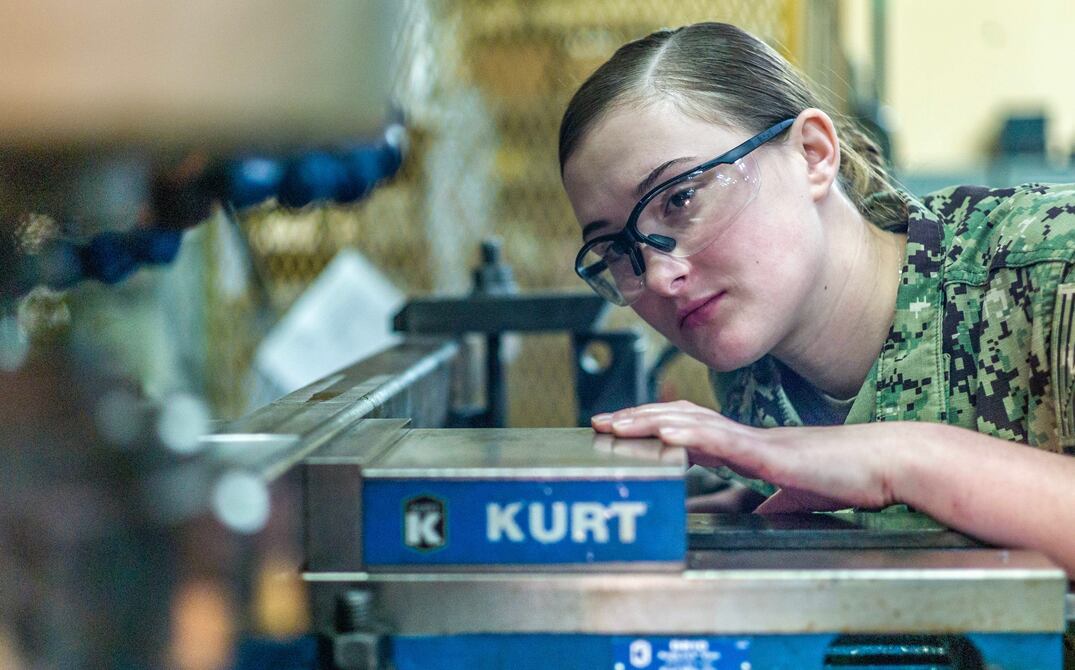Norfolk, Va.— If you’ve gotten ahead by impressing your superiors with a list of collateral duties and long hours of community service instead of remaining proficient in your rating, you’re going to have to change.
Prodded by a mandate from Defense Secretary Jim Mattis to expunge from Navy training anything that fails to make the fleet more lethal and agile as the United States enters a new era of great power competition, leaders are moving to make sure every sailor pulls his or her weight, with a premium placed on job performance.
“Today, when we rate a sailor’s performance now, we are lowering the value of collateral duties, and community service,” U.S. Fleet Forces Command’s top enlisted sailor, Fleet Master Chief Rick O’Rawe, told Navy Times. “Those things still have their place but what’s most important is what we’ve trained and are paying you to do.”
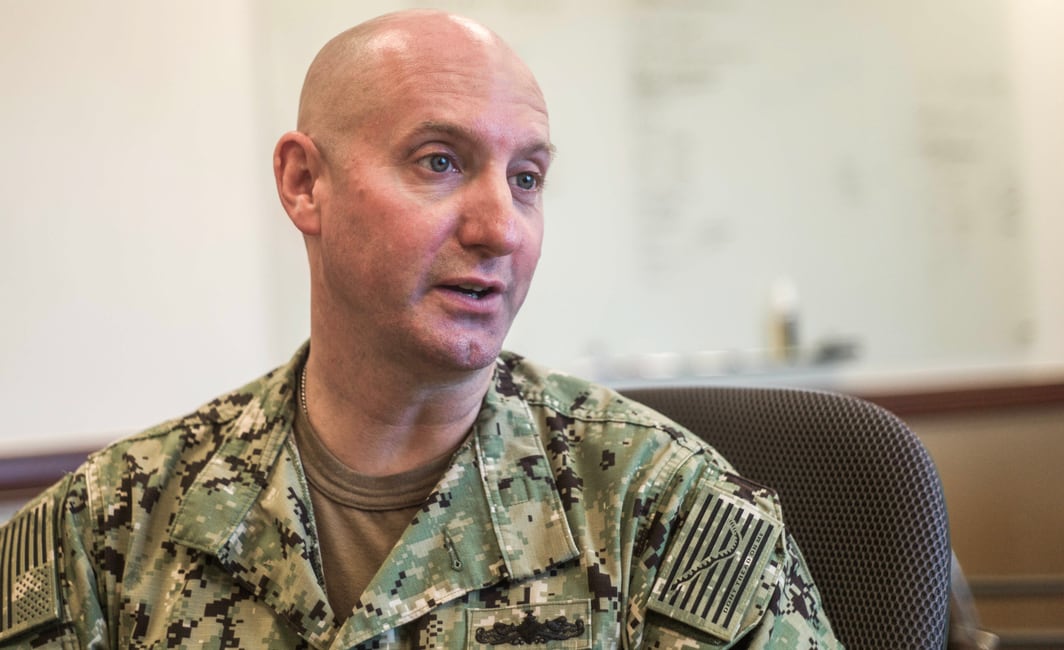
O’Rawe’s warning marks a sea change for the nation’s sea service. For decades, sailors learned that to set themselves apart from their peers they needed to load up on collateral duties — everything from serving as the command’s urinalysis coordinator to the equal opportunity representative — while devoting off-duty hours to volunteering in the community.
Now Big Navy wants them to spend more time cracking open the Naval Ships’ Technical Manual or taking non-resident rating training courses.
Chiefs will be expected to not only instruct and mentor junior sailors but work alongside commissioned officers to create a culture of continuous learning and self-improvement onboard ships or at shore commands.
Machinist’s Mate 1st Class Allen Hawkins is already living the new Navy mandate with his eye on making chief.
After 15 years in uniform, including a pair of back-to-back sea tours and long hours learning his rating on a frigate, cruiser and two amphibious vessels, he thought he knew pretty much everything he needed to know to operate. maintain and fix the ships.
Then he drew orders to the Navy’s Mid-Atlantic Regional Maintenance Center in Norfolk.
Inside the valve shop he began overhauling all sorts of gadgets that conduct air or fluid through pipes and ducts. And it wasn’t like being a little rusty from not turning a wrench for a few years on shore duty. He began to discover things about valves he didn’t know he didn’t know.
“Just when you think you’ve seen it all, you are humbled to realize how much more you have to learn,” Hawkins said. “Coming here is a professionally motivating experience as you not only learn about this end of maintenance, but you learn the tricks of the trade that give you the confidence you’ll need once you get back to the fleet.”
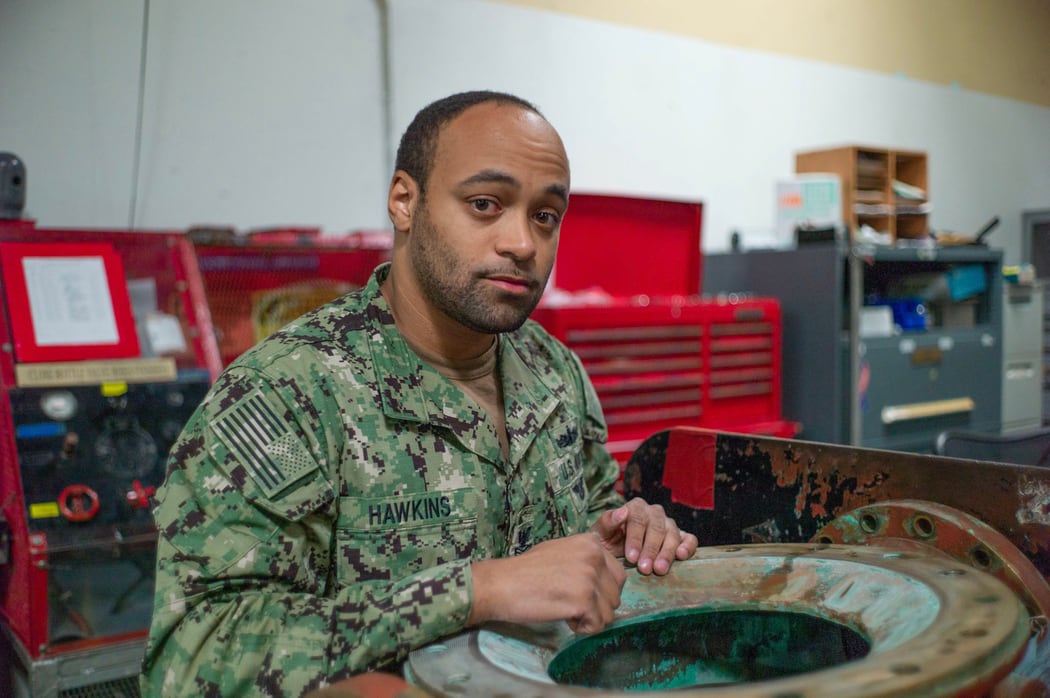
In Norfolk, he’s networking with military and civilian craftsmen he’ll count on for advice throughout his career while developing an expert’s knowledge on valves. The Navy expects him to take that learning from shore duty back to a ship.
“I’m also a little more older and experienced than I was the last time so I think I take it a bit more serious now and that will pay off not only for me, but for my guys working for me as well.,” Hawkins said.
To O’Rawe and other senior leaders, Hawkins is part of a broader process built to turn warships and shore units into incubators of constant retraining.
Some of that is being done informally by pushing the chiefs mess and officers to grade the performance of their sailors on how well they know their jobs. But the service also is formally revamping the entire way it trains enlisted personnel.
Adm. Bill Moran sees it as an ongoing Navy effort to “blow up the conveyor belt” of traditional instruction, a series of Navy reforms called “Ready Relevant Learning.”
“A lot of sailors haven’t really been exposed to this yet because we’re still in the infancy stages, but when this thing becomes fully blown and the technology is put to use, we will see sailors feel like they’re prepared for heading back to sea — where if they are working out of rate for a couple years, well, we owe you that refresher training before you go back to sea as a first class instead of being the third class you were when you left the fleet,” Moran told Navy Times.
Ready Relevant Learning is divided into three phases. The first — Block 0 — is a recruit’s introduction to the Navy in boot camp and then “A” and “C” schools. After about two years in the fleet, the sailor should enter Block 1, getting additional training to keep up with technological or operational changes, plus refresher instruction to retain essential skills for his or her rating.
By 2025, the Navy wants to deliver intermediate and expert learning for experienced sailors like Hawkins, along with tailored on-demand training to keep sailors up to date.
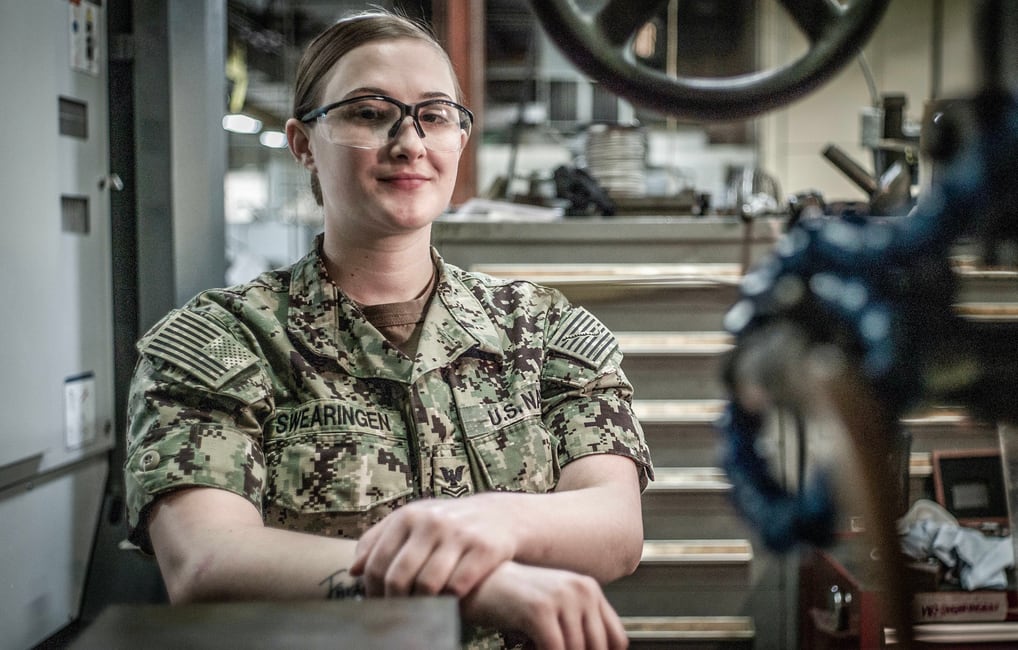
Machinery Repairman 2nd Class Hannah Swearingen is one of those junior sailors moving through pipeline. While Hawkins has spent years at sea, she hasn’t even been to a ship yet. She’s at the Mid-Atlantic Regional Maintenance Center, spending three years taking a deep dive into her craft.
She’s slated to report to the landing platform dock Arlington in January, the only sailor with her rating on the warship. It’s a key job because she’s expected to make parts for engines and other machinery from scratch, a skill that could mean the difference between a broken vessel returning quickly to battle or getting towed home.
“This place gave me a chance to develop myself and as a result have become a very flexible machinist” she said. “I’ve had to learn the process of planning a project and have been given the time to work it. And the diversity of the projects I’ve had to tackle here making parts for the ships makes me feel confident I can take my skills to sea.
“But I wouldn’t hesitate to come back for another tour. This is where you learn.”
And O’Rawe wants her to keep learning, both in the Navy’s program and on her own time.
“Nothing should get in the way of them ruling the roost in their own rating, to be the subject matter expert in your rating regardless of rank,” said O’Rawe, who began his Navy career as an engineman. “Don’t let your pay grade stand in the way of you knowing more. It doesn’t matter.”
Echoing both Chief of Naval Operations Adm. John Richardson and his top enlisted adviser, Master Chief Petty Officer of the Navy Russ Smith (SW/IW/AW), O’Rawe told Navy Times that learning faster, retaining more knowledge and using it to make a warship better are at the heart of what the service needs as other nations bolster their maritime power.
Richardson has pointed to both China and Russia as rising rivals. The former command master chief for the 6th Fleet staff in Naples, O’Rawe wants sailors to also study the rapid deployment of the guided-missile destroyers Ross and Porter across the Mediterranean Sea to launch 59 Tomahawk cruise missiles into Syria on April 7, 2017.
All the sailors had to efficiently perform their jobs or the mission to deter Damascus from future chemical attacks on civilians would’ve failed, he said.
“They need to understand there are other countries out there today that have the economy and are building the scale of force (and) one day may think they’re ready to get into the ring with our Navy,” O’Rawe said. “I want us to be such masters in technical competency — trained and ready to fight — to deter that from happening, or win that fight if necessary”.
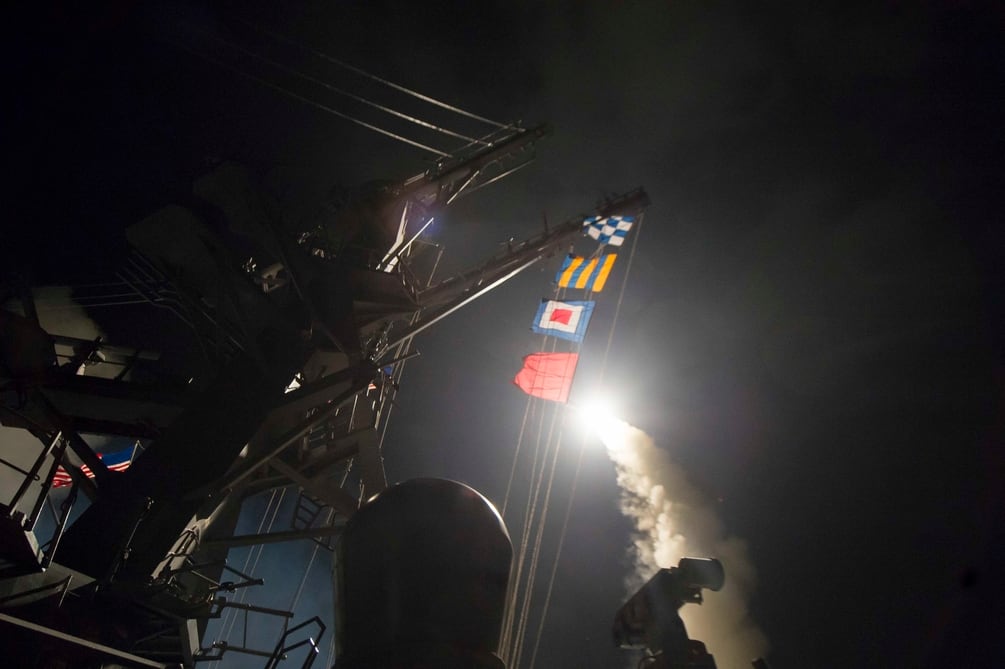
Despite the gathering urgency of the messages from CNO, MCPON and subordinates like O’Rawe, the Navy’s efforts to crank out more sailors like Hawkins and Swearingen have been uneven over the past two decades.
The surface warfare Navy offers roughly 2,500 billets for sailors with engineering and combat ratings at four standalone Regional Maintenance Centers, two shipyard depots and a newly-created forward-deployed RMC in Naples, which oversees detachments in Spain and Bahrain.
Sailors with similar aviation ratings can train at eight centers in the United States and Japan, but the number of billets there has fallen to 5,257, down 33 spots since 2015.
RELATED
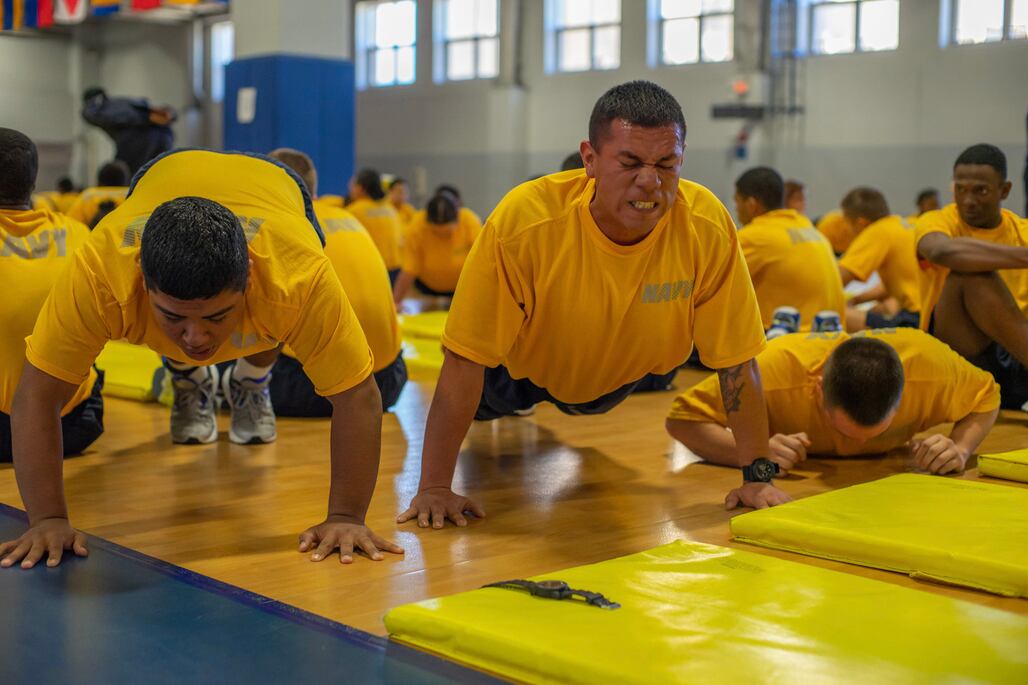
To Jerry Schrage, a former enlisted sailor who retired as a limited duty officer, it’s back to the future for the Navy.
At the beginning of the 21st century, his service started slashing slots at the depots, only to rediscover that they couldn’t be beat when it came to crafting competence and confidence in an increasingly high-tech trade. Now he helms the sailor professional development programs at Norfolk’s depot in the midst of a Navy training renaissance.
“The vast majority of sailors want to learn and be the ‘go to’ sailor when it’s all on the line,” Schrage said. “What they provide here is hands-on skills training. It’s not classroom or virtual reality or reading a book. It’s actually getting your hands dirty and skinning your knuckles busting wrenches.”
Mark D. Faram is a former reporter for Navy Times. He was a senior writer covering personnel, cultural and historical issues. A nine-year active duty Navy veteran, Faram served from 1978 to 1987 as a Navy Diver and photographer.
